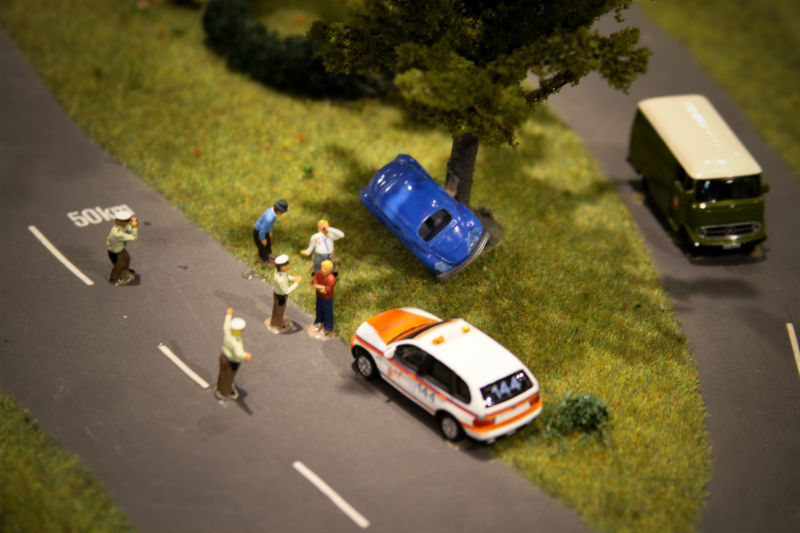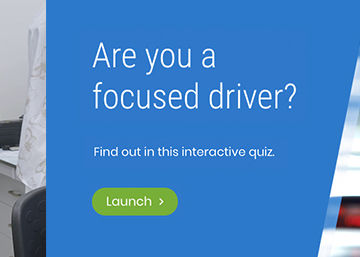
Get caught using your smartphone while driving in the UK and you’ll be in serious trouble. Authorities recently doubled the penalties for using a handset behind the wheel to six points on your licence and a £200 fine. Yet the law – and the car industry itself – hasn’t caught up with the equal dangers of hands-free phone calls while driving. ![]()
A week after the latest penalties for using a handset while driving came into force, the Advertising Standards Agency banned a Jaguar advert which highlighted the benefits of hands-free technology. The advert claimed that Wi-Fi and integrated apps ensure that “drive time is no longer downtime … without compromising safety”. The ASA ruled the advert promoted unsafe driving practices by implying that attention can be shared between tasks.
You might not think it, but research shows talking on a hands-free phone while driving is just as dangerous as using a handset. In fact, drivers remain dangerously distracted even after they’ve hung up. Thankfully, this message is starting to get through, as the ASA’s decision shows. But the fact that the advert was made in the first place, that in-car, hands-free technology is readily available – and that the law doesn’t prevent its use – show how far society still has to go.
Why are hands-free phones dangerous while driving?
Decades of research has demonstrated drivers on the phone are four times more likely to be involved in an accident than undistracted drivers, regardless of whether they’re using a hand-held or hands-free system. This increased risk lasts for around five minutes after the call has ended, suggesting that interacting with the technology isn’t the only issue. It seems that phone conversations take the driver’s focus away from their primary task of driving, even after they’ve hung up. People are largely unaware that their minds wander like this, or that it can affect their driving.
Distracted drivers take longer to react to hazards, miss other hazards altogether, and make poor decisions about their speed and distance from other road users. Research has also shown that the type of conversation a driver has, along with the difficulty of the driving situation, can further affect performance.
Some researchers suggest that these effects are down to increased “cognitive workload”, the amount of information your brain can process at any one time. This makes sense, as we have a limited supply of attentional resources, which include all the resources needed to perceive things in our vision, understand what we hear, and plan for upcoming actions. When driving, your workload may be relatively manageable, yet adding a phone conversation increases that workload. If the demands of driving suddenly increase –- for example when the vehicle ahead brakes sharply –- your workload may become too much to manage and your performance in one or both tasks can break down.
Other research more specifically suggests that workload increases to these unmanageable levels because the two tasks need the same attentional resources, leading to competition between the tasks. A driver can’t share their attention between tasks effectively because both tasks are drawing on the same limited pool of resources. If the resources needed for driving are being used on a phone conversation, the driver may not be able to fully focus, making them more likely to miss important parts of the driving scene.
We can see evidence of increased workload by looking at eye movements. When a driver talks on the phone, they move their eyes less around the driving scene. They use their mirrors less and tend to focus more on the area directly ahead of them, rather than to the sides of the scene. This reduction in their functional field of view could explain why distracted drivers often fail to react to hazards in their peripheral vision.
Yet the evidence reveals something even more worrying. Rather than simply not looking at all areas of the scene, distracted drivers can look at something yet still not register it. In one simulation study, drivers who were heavily involved in a phone conversation failed to detect traffic signals and were less likely to recall billboards at the side of the road.
By tracking the drivers’ eye movements, the researchers showed that distracted and undistracted drivers viewed the billboards the same amount. But those on the phone did not have the cognitive resources available to process what their eyes were looking at. They looked but failed to see.
Why are hands free phones more dangerous than talking to passengers in the car?
What these issues don’t mean is that drivers shouldn’t talk to passengers. While adding any extra workload to a driver can be distracting, phone conversations are more distracting because the people talking don’t have a shared visual environment. The person on the other end of the phone can’t see what the driver can and so don’t pause the conversation when the driver needs to concentrate more on the road, for example at junctions.
One study neatly demonstrated this by comparing drivers’ conversations when talking to a passenger, someone on the phone, or a blind-folded passenger. The regular passengers stopped talking when driving became more challenging, but the blindfolded and phone conversation partners did not.
Having two eyes on the road categorically does not equate to “safe” driving. Yet current laws still perpetuate the myth that hands-free is safe, a message echoed in the media and supported by growth in hands-free technology in cars. Drivers need to know the real dangers of hands-free phone use so they can make informed decisions about how safe their actions are.
This article was originally published on The Conversation. Read the original article.





Rate and Review
Rate this article
Review this article
Log into OpenLearn to leave reviews and join in the conversation.
Article reviews
(Link removed by moderator)
Andi Waghorne - 8 August 2019 2:02pm
Would listening to the radio or any other music produce the same sort of distraction? I can understand how talking on the phone, even using hands-free equipment, can be potentially dangerous but I cannot help but think it will be entirely impossible to be enforced by a law prohibiting its use.
The responsible drivers out there already take measures to increase their safety (majority of those I know avoid using their phone completely whilst driving) but the irresponsible few (think of those who continue to use their phones whilst driving, speeding, drink driving, etc.) will take no regard of any extra safety advise and will continue to be a dangerous hazard.
Gemma Briggs - 8 August 2019 2:52pm
It's definitely the case that interacting with any technology while driving can be distracting. This includes sat navs and radios, etc. The key difference in terms of distraction seems to the the level of interactivity that is required. In a phone conversation, you are required to process the information that you're hearing and then provide a response in a timely way. That level of interactivity isn't really needed for listening to the radio (many people say they often 'zone out' of listening to the radio when they face something in their driving task which needs more attention) or following a sat nav. Of course, if you're programming a sat nav whilst driving, that's another issue entirely!
In terms of an outright ban being difficult to enfore - I'd argue that, yes, it would be difficult, but not impossible. There are technologies already in place aimed at detecting phone use by drivers, and greater investment in these areas could really help with enforcement. From my point of view, I'm really passionate about raising public awareness of the safety issues. As you say, many already refuse to use their phones while driving. However, for others it is a normal daily activity - and it is actively promoted as 'safe' by car manufacturers who install tech which supports and encourages interactivity whilst driving - so may well not consider this as a safety issue at all. There's still lots of work to be done!